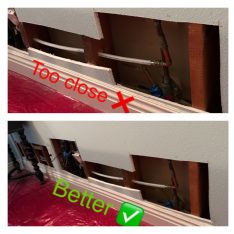Introduction
Drywall is an essential component of modern homes and buildings, providing a smooth and seamless surface for walls and ceilings. Over time, however, it is common for drywall to experience wear and tear, resulting in cracks, holes, or water damage. While hiring a professional drywall repair contractor is an option, many homeowners prefer to tackle the task themselves. This DIY guide will walk you through the process of fixing drywall without professional help, and outline the necessary tools for a successful repair job.
Tools You'll Need
Before you begin, gather the necessary tools and materials to ensure a smooth and efficient repair process:
- Utility knife
- Drywall hand saw or fancy electric tools if you have a sawzall around
- Keyhole saw or skill-saw
- Drywall compound or joint compound
- Drywall tape (paper or mesh)
- Drywall screws (1 1/4" for half inch gypsum, 1 5/8" for five eights inch gypsum)
- Sandpaper (120-220-320 grit)
- Putty knife (6-inch and 12-inch sizes)
- Screwdriver or drill with a screwdriver bit
- Tape measure
- Pencil
- Replacement drywall (if necessary)
- Straight edge or T-square
- Safety gear (goggles, gloves, dust mask)
Step-by-Step Guide
- Step 1: Assess the Damage Inspect the damaged area and determine the extent of the repair needed. Small holes and cracks can be easily patched, while larger holes or water damage may require the replacement of a section of the drywall.
- Step 2: Cut Out the Damaged Area For larger repairs, use a utility knife or drywall saw to carefully cut out the damaged section. Be sure to remove any loose or damaged material, and create a clean, square or rectangular hole.
- Step 3: Measure and Cut Replacement Drywall Measure the dimensions of the hole and transfer them onto a piece of replacement drywall. Using a straight edge or T-square, cut the drywall to size with a utility knife.
- Step 4: Secure the New Drywall Screw a wood support (such as a 1x3) behind the hole, and attach it to the existing drywall with drywall screws. Position the new drywall piece over the hole and secure it to the wood support with additional drywall screws.
- Step 5: Apply Joint Compound Apply a thin layer of joint compound along the seams using a 6-inch putty knife. Place drywall tape over the compound and press it firmly into place.
- Step 6: Smooth the Surface Apply another layer of joint compound over the tape, feathering the edges with a 12-inch putty knife to blend the repaired area with the surrounding drywall. Allow the compound to dry for at least 24 hours.
- Step 7: Sand and Finish After the joint compound has dried, sand the surface using 120-150 grit sandpaper until it is smooth and even. Wipe away any dust with a damp cloth, and apply a final thin layer of joint compound if necessary. Once the compound is completely dry, sand the area one last time 220 grit & then 320 grit, to ensure a seamless finish.
- Step 8: Prime and Paint To complete the repair, prime the patched area and allow it to dry. Then, paint the wall to match the surrounding surface.
Conclusion
While fixing drywall yourself can be a cost-effective alternative to hiring professional services, it's typically something that is hard to make perfect on your first patch. It takes lots of practice! Hiring a pro can also be freeing up your time to do some other projects that may not be so tedious.
